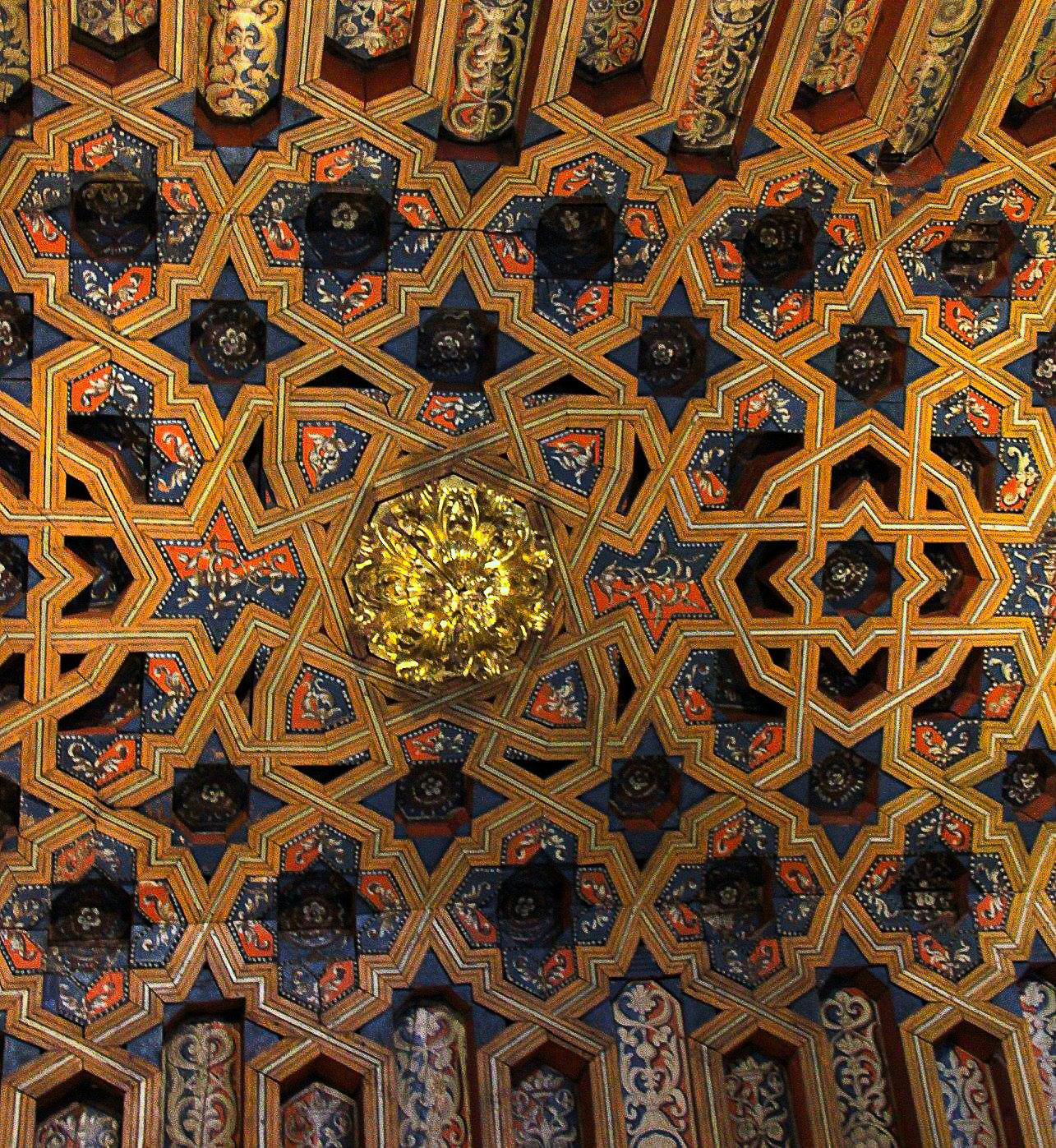´´Give him alms, woman, for there is nothing sadder in life than being blind in Granada.´´– Francisco de Icaza. This is probably true because in my eyes Granada is the most beautiful city in Spain and one of the loveliest places in the whole world. Beauty lies scattered there at every nook and corner; to top it all, the natural setting is magnificent. One of the things I like most about Andalucia, especially Granada is the seamless blending of Moorish and Christian architecture. The Moorish love for exquisite symmetry and details undoubtedly adds to the jewel box-like quality of any building. Though this legacy points towards a tumultuous history, I believe that art comes before politics. We cannot change the past – so why harp on things like religious persecution and focus instead on positive aspects of that foreign culture like their contribution to architecture and art? One of the artistic legacies left by the Moors in Andalucia is marquetry.
Table of Contents
Marquetry is a Moorish legacy in Granada
Also known as Taracea, marquetry is the art of wooden inlay brought to Granada by the Moors from Northern Africa. It can be seen in many historical buildings like the Alhambra and the Madrasa of Granada. This art form has changed very little in Granada since the 14th century. The name taracea is derived from the Arabic word Tarxia, which means inlay. Marquetry consists of cutting bone, metal, mahogany, ebony, rosewood, and walnut into small geometric shapes. These are then glued together along the grain to create symmetrically patterned rods. Traditionally, there are two types of finishes for the pieces, the traditional “crankpin” which is matte, and the polyester with gloss. The current marquetry designs are the same as those used in the 14th and 15th centuries to decorate furniture, ceilings, and doors in the Alhambra and other historical buildings like the Madrasa of Granada. Nowadays marquetry is practiced in only two places in the world: Damascus and Granada.

Marquetry is a Moorish art in Granada
A dying art
Marquetry is a dying art. In Granada, there are only a couple of producers left. One of them called Artesania Beas. It is located in the Zaidin neighbourhood. The chief artisan is eighty years old and it´s the only job he has ever done. Since the technique of carving bone is particularly tough on the hands, genuine marquetry is being replaced by cheap factory productions. However, one can still enjoy this exquisite art at Alhambra and the Madrasa of Granada. Take a look at the marquetry at the Madrasa of Granada and tell me, if art is not enough to stop squabbling over political upheavals of the past. India, are you listening?
Tips to see the marquetry of La Madrasa in Granada
The Madrasa was the first public university of Al Andalus and later became the first town hall of Granada. It opened its gates in 1349 and was the first university in Granada and was opened by Yusuf I. Currently, La Madraza belongs to Granada University and is open to the public. Opening times: 10 am to 7 pm daily. Entrance fee: 2€ The two highlights of La Madrasa are located inside the building. The marquetry of the wooden detailed ceiling on the first floor is spectacular. I especially love the details of the coloured decorations in deep blue and gold. There is also intricate plasterwork along the walls that are reminiscent of the Nazari palaces of the Alhambra.

marquetry in Granada





Follow the rest of the Spain series
- THE PLAINS OF LA MANCHA, THE LAND OF DON QUIXOTE
- CUENCA IS UNDERRATED SPAIN
- MOUNTAIN VILLAGE OF NIJAR IN SPAIN
- CABO DE GATA NATIONAL PARK IN SPAIN
- ALMERIA CITY WALKS AND PHOTO ESSAY
- ALMERIA, ONE OF THE SOUTHERNMOST CITIES OF SPAIN
- CARTAGENA TRAVEL PHOTOS
- GIRONA FOOD MARKET IN SPAIN
- 48 HOURS IN GIRONA
- DALI MUSEUM IN FIGUERES IN SPAIN
- THINGS TO DO IN GRANADA
- SECRETS OF THE NASRID PALACES
- VISITING ALHAMBRA, SPAIN’S MOST VISITED SITE
- GRANADA IS A MOORISH DREAM
- 1 WEEK ANDALUSIA ROAD TRIP IN SPAIN
RESPONSIBLE TRAVELING-BECAUSE I CARE

